Naturally gluten-free, Colombian cheese arepas (arepas con queso / arepas de queso) are little golden brown pockets of corn flour and delicious cheese that will melt in your mouth with each bite.
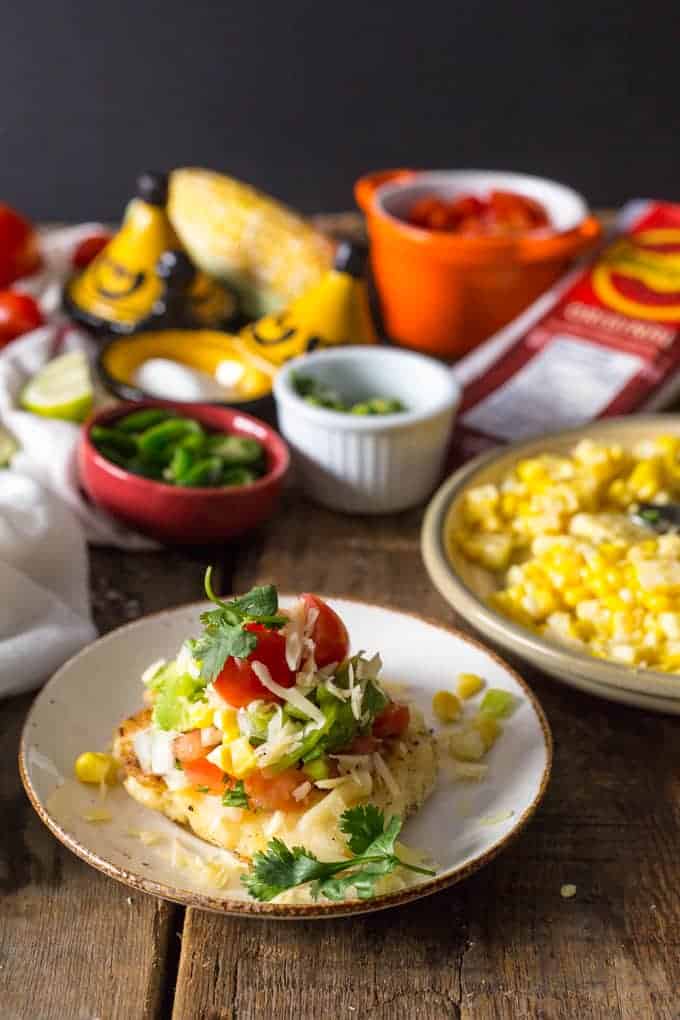
Whether you know them from Disney's Encanto film or from your travels to Colombia or Venezuela, these little Latin versions of grilled cheese taste amazing when coming off the skillet! Stuff these with mozzarella cheese, queso fresco or Jarlsberg cheese, and enjoy little bites of cheese goodness hot off the griddle.
Cook arepas de queso on a griddle and top them up with your favourite South American fixings - avocado, tomato, onions, more corn and a couple of delicious salsas - and feel the deliciousness of this crispy on the outside, gooey on the inside cheese arepas recipe. Discover the cuisine made popular by the movie Encanto with this traditional recipe!
This post is sponsored by Jarlsberg cheese, and contains affiliate links. Thank you for supporting the companies that make this blog possible.
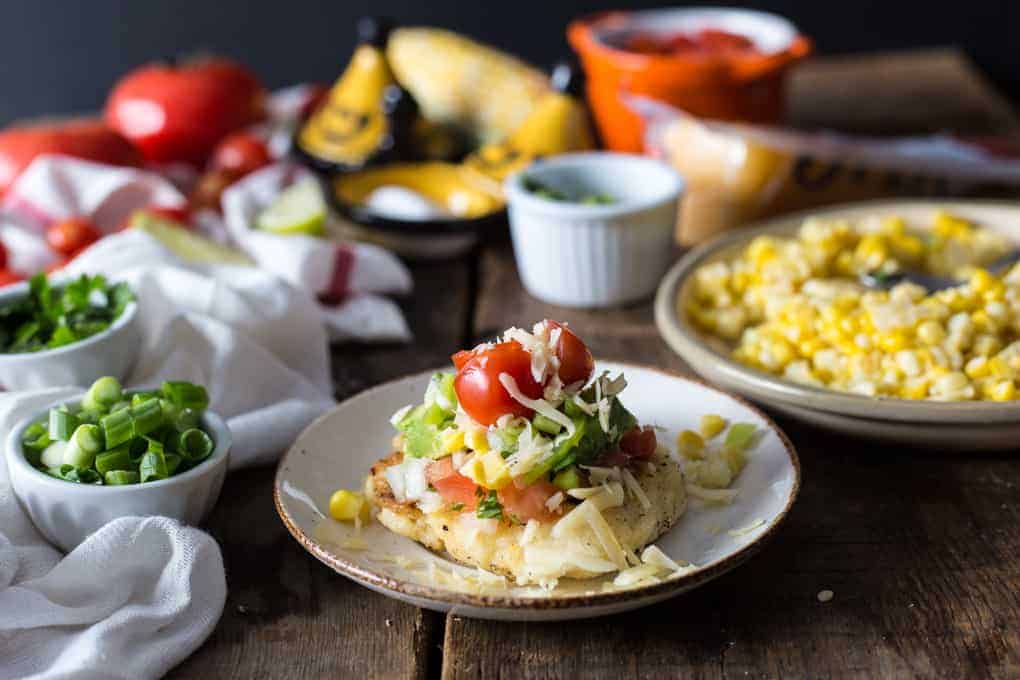
Discovering arepas con queso in Colombia
My first time arriving in Colombia also happened to be the first time I saw my normally gentle boyfriend truly lose his cool.
“What did I say, mom? What did I say?” he proceeded to yell into the hand-held phone, the cool night air entering the car through the barely open taxicab window, intermingled with the faint scent of rotting fruit and smog.
“I told you NOT to come to the airport, didn’t I? And what did you do?” I let my fingers intertwine with his, trying to put all the certainty I wasn’t even close to feeling into that one small gesture. The night-time streets of Bogota passed outside the window, all curves and gentle inclines, the street lamps blinking as though winking at us, conspiratorial.
“Now we have to sit outside and wait for you.” SLAM, the phone went into the car seat. A few deep breaths were the only sound audible in the car, except the ticking of the driver’s turning signal.
“I warned you, didn’t I?” he looked at me, speaking in his usual, quiet voice, his eyes pleading with me not to judge, to understand, to contain his emotions, which suddenly seemed too big and strong for this tiny, rickety taxi barreling dangerously through the streets of Bogota.
“Estamos aquí, señor,” the cab driver said in his brusque, clear Colombian Spanish, bringing us back to reality: the gated neighbourhood we arrived in, the youngsters playing soccer at 11PM, the tiny, makeshift bar on the corner, seemingly populated solely by the owner’s best friends.
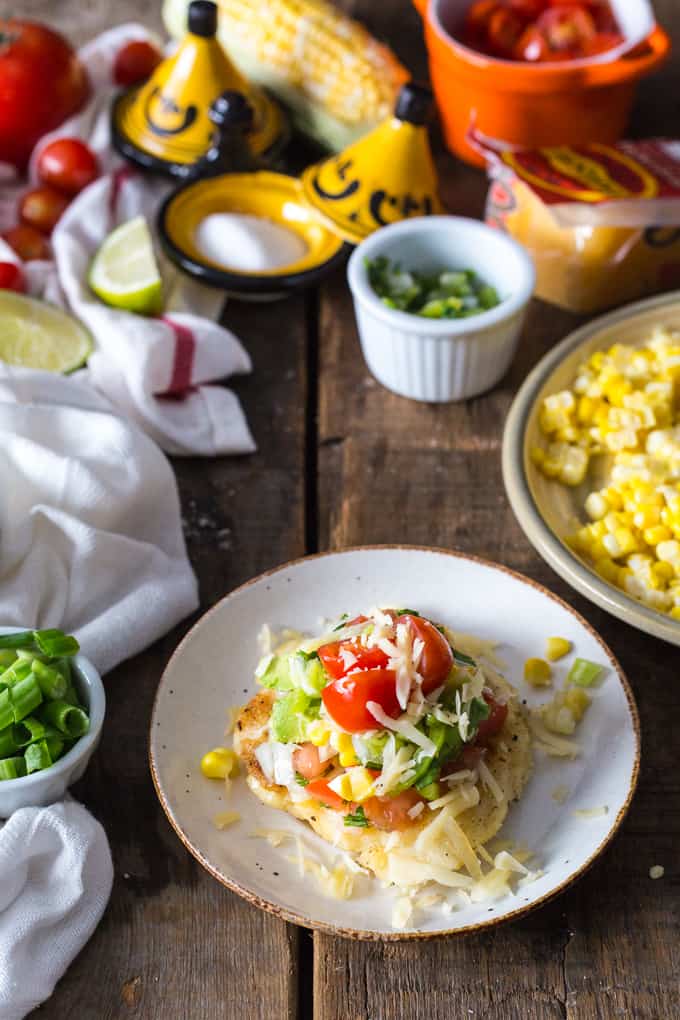
The Colombian cheese arepas con queso glistening in the glass display cases alongside Colombian baked plantains and Colombian desserts, little golden rounds of fried corn dough holding within them melted treasures.
We lifted our suitcase from the trunk and walked to the entryway, never letting go of each other’s hands.
What are arepas de queso?
Arepas con queso (Cheese arepas, also called arepas de queso in Colombia and Venezuela) are fritters that are made out of ground and precooked corn flour (masarepa), mixed with shredded cheese and cooked on a griddle.
For more arepas recipe, see my arepas de choclo recipe and my mother-in-law's Colombian arepas.
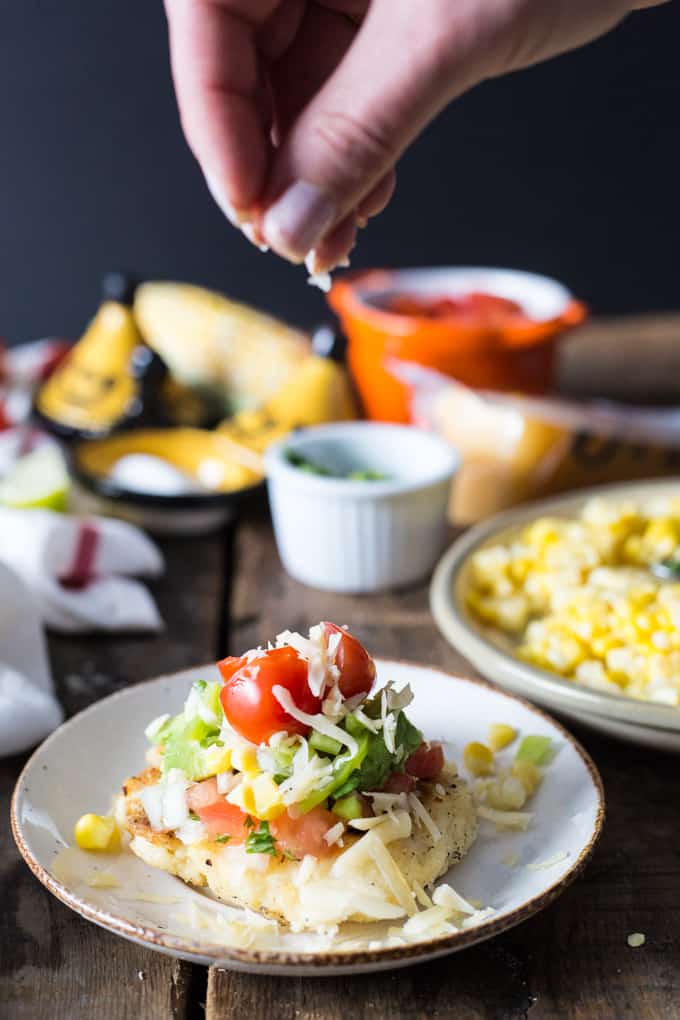
Colombian arepas are often served warm and eaten for breakfast, slathered with butter and more cheese on top. They are often had with hot chocolate or Colombian fruit salad, another staple of Colombian food.
My first time tasting an arepa colombiana came my first morning in Bogota, when, with the stresses of the previous night forgotten, my husband's mom proceeded to heat us up a mountainous pile of arepas stuffed with cheese.
My first bite into these warm golden pockets was met with a squirt of melted cheese, a burning sensation that was totally worth it for the intoxicating taste of gooey, stringy cheese inside.
It was love at first cheesy corn cake.
After that, we proceeded to buy cheese arepas at various little vendors - for breakfast in the small, sleepy town of Villa de Leyva, alongside boiling-hot aromatica, the local tea made up of a random selection of herbs and plants that never seemed to repeat itself.
I developed this arepas de queso recipe after watching my mother in law make them many times. My first time making arepas was not an immediate success, and I encourage you to experiment with this recipe a few times until you get the technique just right! I am thrilled to finally share this melty, cheesy, traditional Colombian recipe with you!
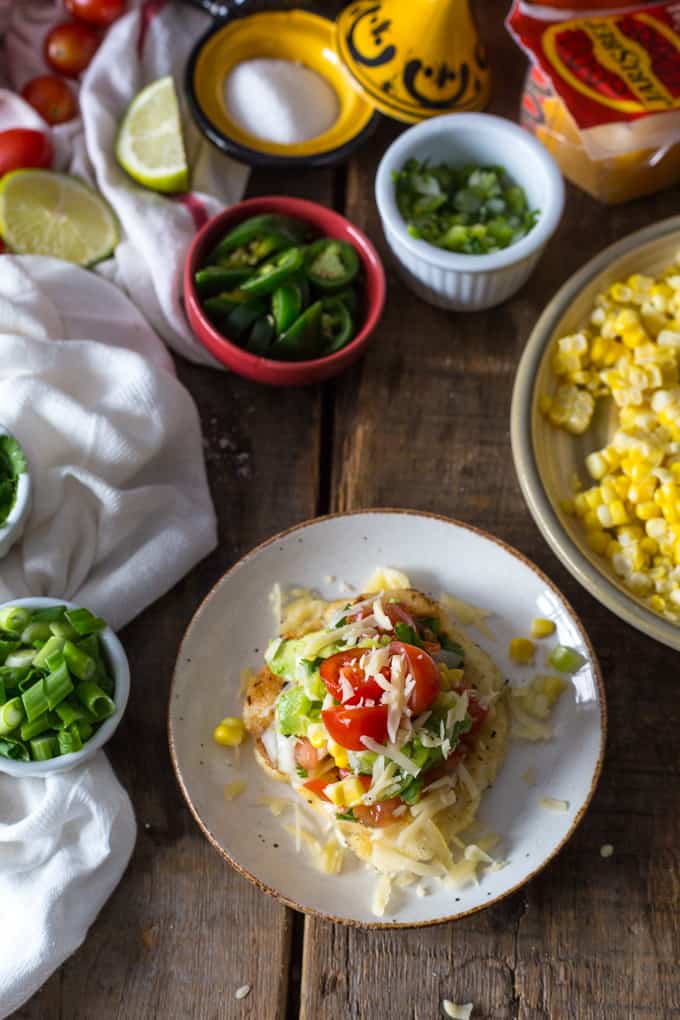
What is the difference between arepas and pupusas?
Arepas are one of the most popular recipes in Latin America, and many countries have their own version of this Latin grilled cheese sandwich.
Like Colombian arepas con queso, pupusas are also little corn cakes, often made with cheese. They are most usually Dominican in origin.
However, while cheese arepas are made out of masarepa, pupusas are made out of masa harina. They are drier and usually less sweet than cheese arepas.
Recreating Colombian arepas con queso at home

This authentic arepas recipe was brought back from my experiences in Colombia.
There, I had freshly baked Boyaca-style cheese arepas that could barely contain the inviting fragrance of the corn-and-cheese patties inside.
They were great alongside Colombian ensalada de frutas or beautiful Colombian pear ceviche for a lunchtime snack in the market of Chiquinquira.
It’s only natural that I sought to recreate these little tastes of goodness upon my return to cold, wintery Montreal in mid February.
After tries with a few different cheeses, we finally settled on the Norwegian Jarlsberg cheese as the perfect arepa toppings for our authentic Colombian cheese arepas.
The nutty taste of this otherwise mild, golden cheese is a perfect accompaniment to the sweetness of the white corn meal. Its beautiful melting qualities made the experience of biting into one golden, fried cheesy corn cake a moment worthy of a celebration.
Making cheese arepa at home is a surprisingly quick, simple affair that will allow you to explore the cuisine of that incredible country, with which I fell in love upon first bite.
Arepa con queso Ingredients
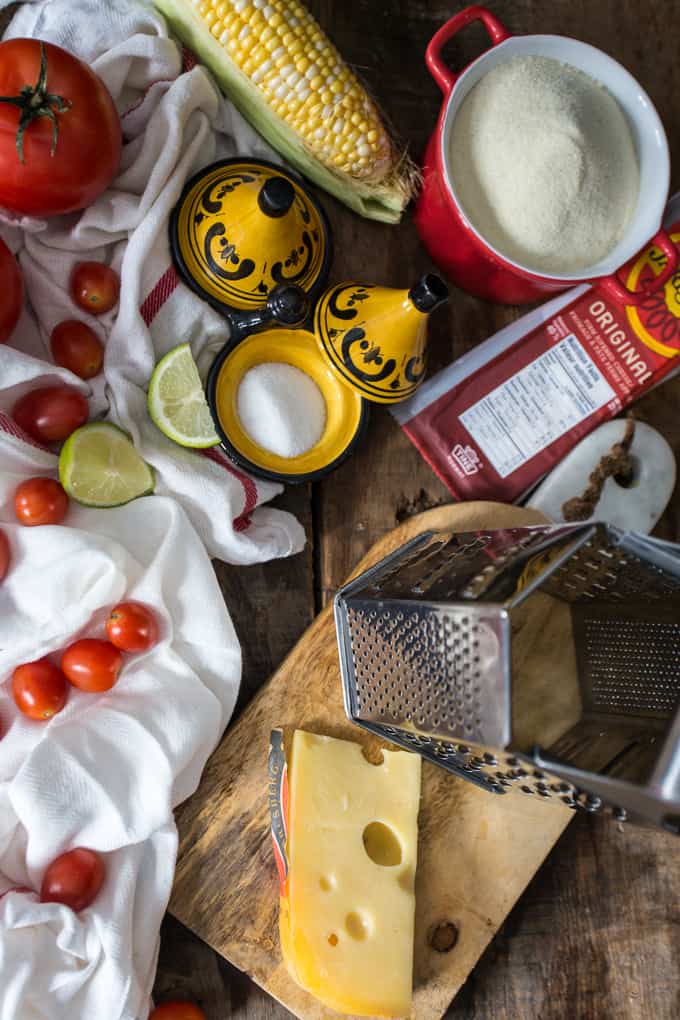
This recipe calls for:
- warm water - any water will do, but make sure it is warm and not boiling hot or cold. This will enable to you shape the cheese arepas better.
- Pre-cooked white or yellow arepa flour also known as masarepa - Goya and P.A.N are common masarepa brands in North America. You can find them in Latin or Asian stores, or on Amazon. They have a light, sweet corn flavor that is subtle yet delicious.
- Cheese, grated - you can use Jarlsberg cheese, sherdded mozzarella cheese or even queso fresco for best results
- vegetable oilor melted butter - use a good saltedbutter, or choose a flavorless oil like sunflower oil, or grapeseed oil.
- Salt - used to flavor the arepas de queso.
See recipe card for exact measurements.
Where to find arepa flour (masarepa)?
Arepa flour, or masarepa, which is what you use for making arepas. is different than regular corn flour because it is precooked cornmeal. That means the corn is first cooked, then ground into a flour and dried.
These days, arepa flour is found in many Latin stores, and general international ethnic stores. If you're lucky enough to live in an area with a large Latin population, you may even be able to find arepa flour in your local supermarket.
You can also buy arepa flour online, on Amazon. Goya and P.A.N are two common brands in North America. I tend to have P.A.N on hand all the time.
How to Make Arepas con Queso Recipe
Make the dough:
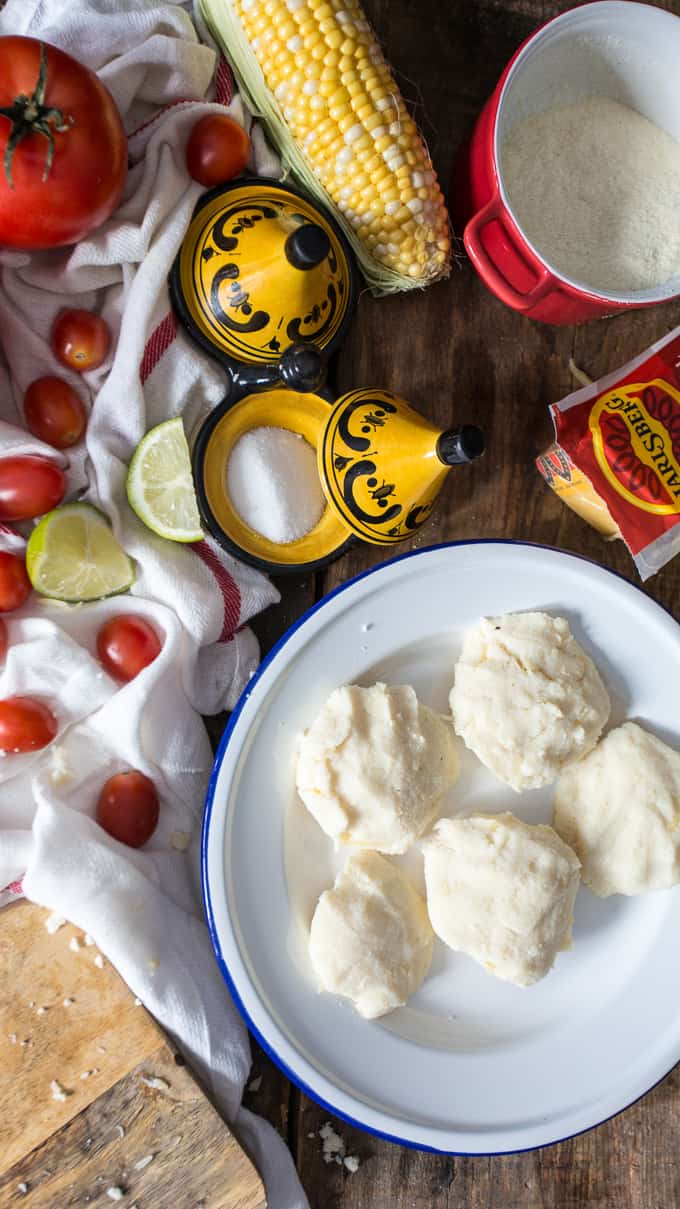
Pour water into large bowl. Add arepa flour, teaspoon salt, oil, Jarlsberg cheese, and mix thoroughly to combine. Cover with a towel and let dough rest for five minutes.
Working with moist hands, remove about 3 tbsps worth of dough, knead the dough, and flatten them between your palms. Add 1 tablespoon of cheese in the middle, and top with a handful more dough, gently pressing the dough over to cover the cheese in the dough and form a patty about ¼ inch thick.
Shape the arepas:
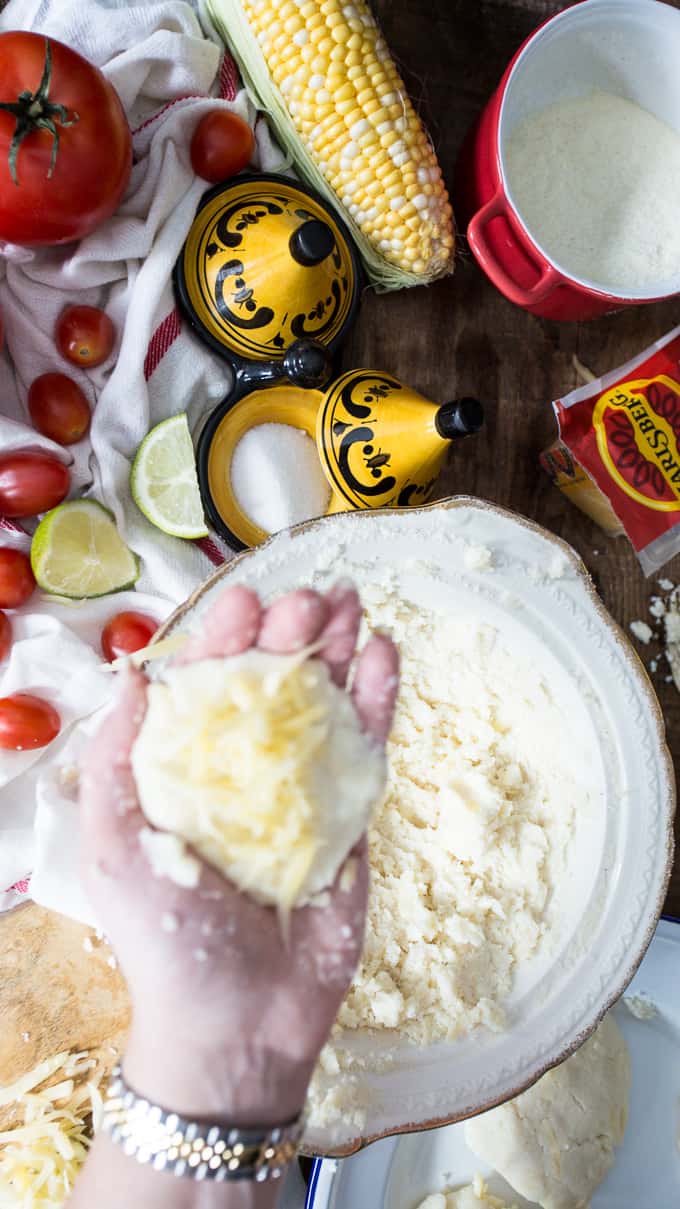
If you’re after those perfectly shaped Colombian arepas, place each ball of dough between 2 sheets of wax paper or plastic wrap and flatten them to ¼ inch with a heavy cast iron pan. Repeat until you’re out of dough and cheese, transferring prepared arepas to a large platter.
Cook the arepas:

Preheat your budare (special arepas pan), griddle or cast iron pan to medium heat. Season with oil or butter to prevent them from sticking. Add the arepas and cook about 5 minutes on one side. Then, another 5 minutes on the second side, until you achieve golden-brown colour and a beautiful char in spots. The best arepas tend to stick to the griddle until they are ready to be flipped, so don't rush it!
Serve Arepas Con Queso with toppings

To serve arepas de queso, cut them in half and put your favourite toppings inside - this is the way Venezuelan arepas are traditionally eaten, but I like it even more than just eating them plain. If not serving right away, transfer them to a 200 F oven to keep warm.
Drizzle with Colombian pico de gallo and spicy aji.
How to stuff a cheese arepa colombiana?

Most of the time, Colombians arepas are had warm, with a pat of butter. This is one of the most simple ways to eat arepas. It's delicious and easy with all that melty cheese!
But when you want to go all out, you can top your cheese arepas with toppings. Or even better, stuff them, as they do in Venezuela.
Whether you put things inside your arepa, making a Venezuelan arepa, or on-top, like a Colombian, here are some of my favourite ideas for arepas fillings and what to eat with arepas: Colombian Aji is a must with arepas! Avocado, beans, beef, chicken, corn, more cheese, tomatoes, or better yet, Pico de Gallo (also known as empanada sauce).
Storing Cheese Arepa Con Queso:
Store leftover arepas de queso in an airtight container in the refrigerator for up to 3 days. To reheat, warm them on a skillet over medium heat for a few minutes on each side until heated through. Alternatively, place them in a 350°F (175°C) oven on parchment paper for about 10 minutes total time. Avoid microwaving, as it can make the texture rubbery. For longer storage, freeze cooked arepas in a single layer. Then transfer them to a freezer bag and reheat directly from frozen on a skillet or in the oven.

Recipe
Tried and loved this recipe? Please leave a 5-star review below! Your reviews mean a lot to me, so if you've got any questions, please let me know in a comment.
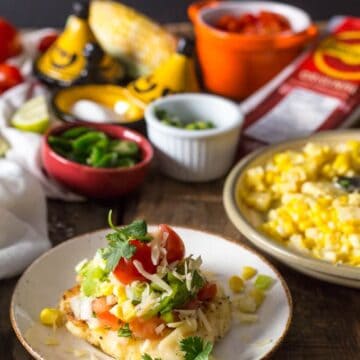
Authentic Colombian cheese arepas with all the fixings
Ingredients
Colombian cheese arepas:
- 1 cup warm water
- 1 cup pre-cooked white or yellow arepa flour also known as masarepa - Goya and P.A.N are common brands in North America
- 1 cup Jarlsberg cheese grated
- 1 tablespoon oil
- Pinch salt
Toppings:
- ¼ cup Jarlsberg cheese grated
- 1 ripe avocado sliced
- ½ pint of cherry tomatoes cut in half
- ½ red onion diced finely
- Fresh cilantro chopped finely
- Green onion sliced into thin circles
- ½ cup Colombian pico de gallo (or your favourite salsa)
- ⅛ cup Colombian aji (https://immigrantstable.com/2018/05/18/spicy-colombian-aji-the-best-hot-sauce/, or your favourite hot sauce)
Instructions
- Pour water into large bowl. Add arepa corn flour, salt, oil, ½ cup of Jarlsberg cheese, and mix thoroughly to combine. Cover with a towel and let dough rest for five minutes.
- Working with moist hands, remove about 3 tbsps worth of dough and flatten them between your palms. Add 1 tablespoon of cheese in the middle, and top with a handful more dough, gently pressing to seal the cheese inside and form a patty about ¼ inch thick. If you’re after those perfectly shaped arepas, place each arepa ball between 2 sheets of wax paper or plastic wrap and flatten them to ¼ inch with a heavy cast iron pan. Repeat until you’re out of dough and cheese, transferring prepared arepas to a large platter.
- Preheat your budare (special arepas pan), griddle or cast iron pan to high heat. Season with oil or butter. Place the arepas in the pan and cook about 5 minutes on each side, until you achieve golden-brown colour and a beautiful char in spots.
- To serve arepas, cut them in half and put your favourite toppings inside. Drizzle with Colombian pico de gallo and aji.

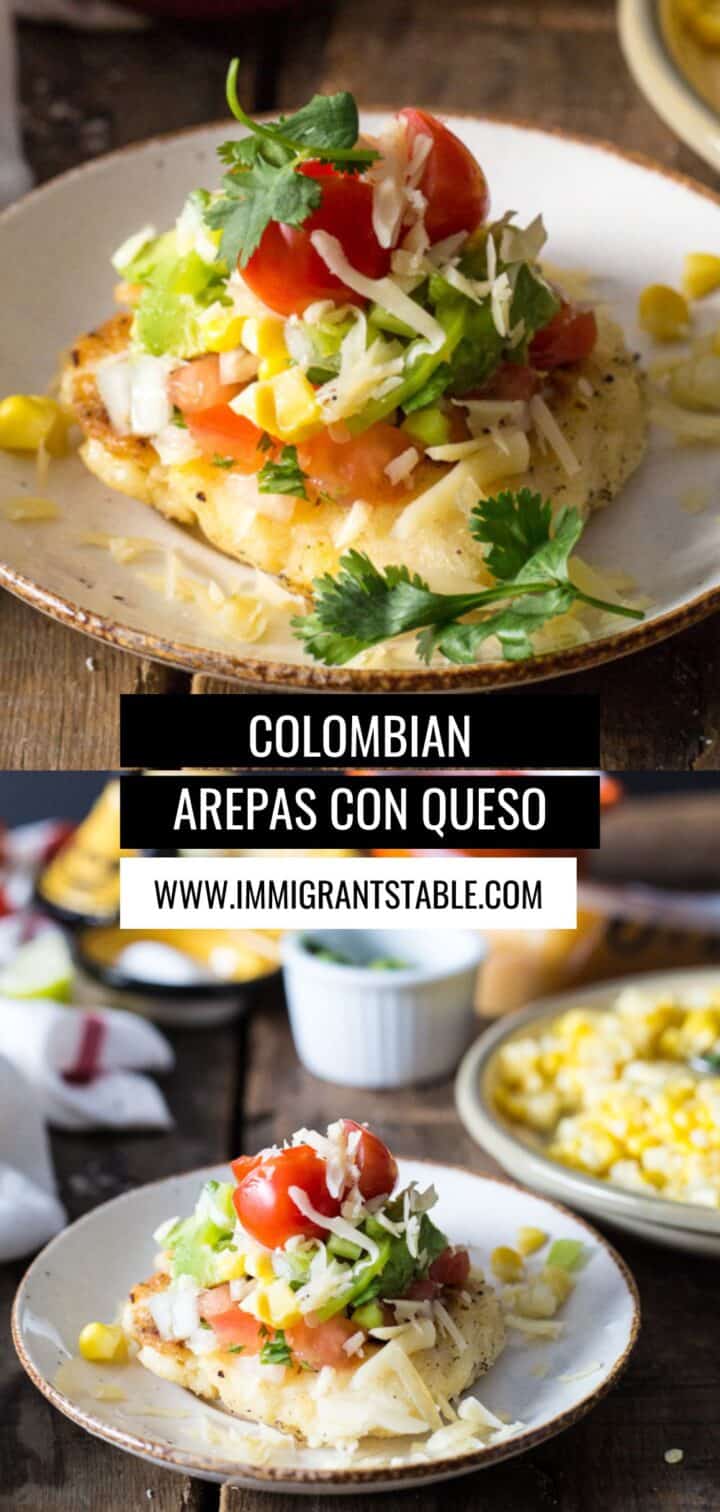
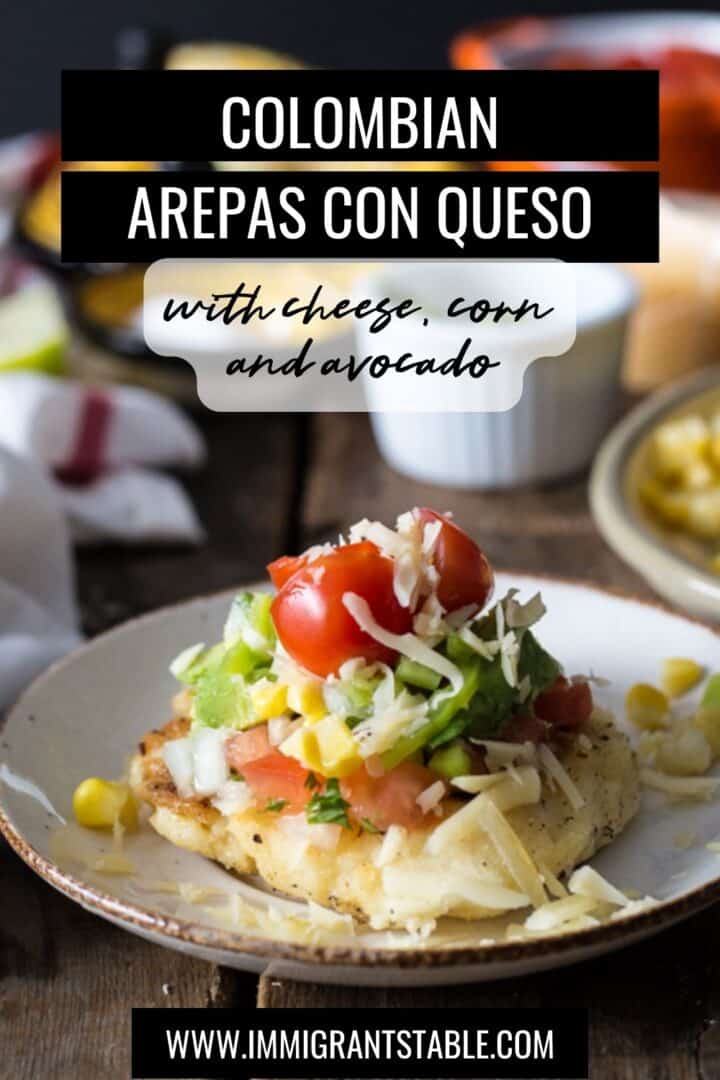

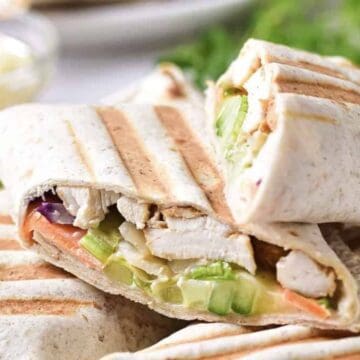
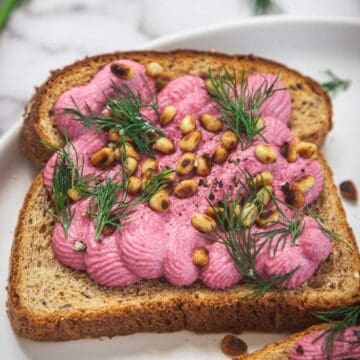

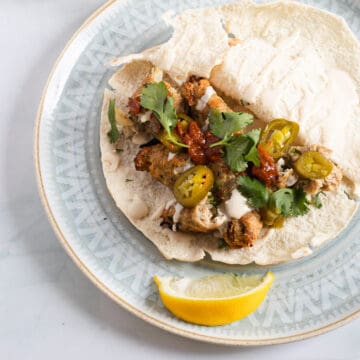
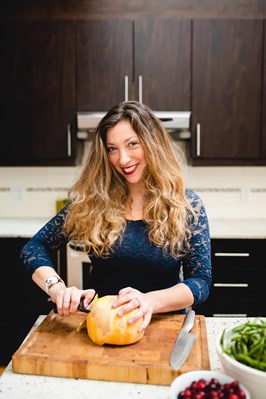
Irene says
Your photos of the cheese arepas.made my mouth water. I will put this on my list to make this summer at the lake.
kseniaprints says
You'll find these super easy, I am sure!
Jael says
Lovely pictures:) I lived a few years in Venezuela, and everybody says Venezuelan arepas are better than the Colombian one,and I did try one also on my stay in Bogota, and indeed the Venezuelan ones are better;D
kseniaprints says
Haha, don't tell that to my boyfriend 😉 In all seriousness, Venezuelan arepas are what I knew best, and I love that you put so many things in them! Most of the Colombian ones I've had have been plainer... BUT adding cheese into the arepa mixture makes a huge difference!
Jael says
Great, I will add cheese to my arepas next time I make them:)
Albert Bevia says
I still remember the first time I had arepas....I was in awe...your images are truly stunning and I love the idea of using Jarlsberg cheese.....great recipe
kseniaprints says
Thank you Albert! Also, love discovering your site - I am still dreaming about all the amazing dishes I discovered in Barcelona last year. Can't wait to go to Spain again and discover more of your country's incredibly diverse regional cuisines.
Albert Bevia says
Yeah Barcelona has some truly incredible food, love your blog 🙂
Karly says
I'm not familiar with arepas but these pictures reeled me in! They look amazing and easy too!
kseniaprints says
Thank you Karly! You should give them a try, it's a perfect blank canvas for so many things.
Krystle says
I've never tried anything like this but they look delicious. Looking forward to your future pico recipe too!
kseniaprints says
Give it a try, I think you'll find them easy-peasy! Especially as a baker 🙂 Pico recipe coming this Thursday!
Jhoanna Astudillo says
Extremely sad that your boyfriend talked to her mom like that. He might not live in Colombia anymore but it’s not like he doesn’t know the culture and the love that moms have for the kids. How much trouble did it cause him that his mom went to the airport? She did because she cared. And it was sad that you added that as part of your story, highlighting such ungrateful behavior from your boyfriend. If I was in the car with him I would have told him “no seas malcriado e ingrato y respeta a tu madre. No creas que ella hizo ese viaje para molestarte. Malagradecido, fue porque te quiere. Si te hubiese tratado de otra forma también tú hubieses quejado”.